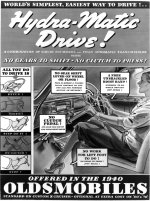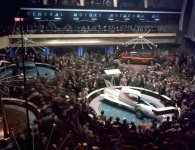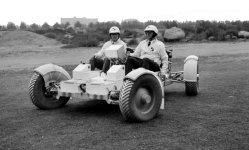teamzr1
Supporting vendor
Pre – 1908 Origin Of GM, Carriage Makers, Engine Builders and Component Suppliers
The taproots of General Motors Their taproots reach down to carriage- and wagon-building, to firearms, stationary and marine gasoline engines, milling machinery, roller bearings, bicycle gears, lathes, and even door-bells. Their branch roots stretch back to the beginnings of scientific experiment, since the self-propelled vehicle is the child of physics and chemistry.
David Dunbar Buick, a skilled machinist, inventor and business owner in Detroit, Michigan, began producing gasoline engines around 1895. He completed two experimental automobiles before moving to Flint. Michigan and incorporating the Buick Motor Company in 1903.
Raised in Flint, Michigan, William C. "Billy" Durant was a marketing genius and known as the “king of carriage makers” for building America’s most successful horse-drawn vehicle empire beginning in 1886. Originally skeptical of automobiles, he became smitten with the Buick after the company’s investors approached him to take charge of it. He took the reins in late 1904 and by 1908 had turned it into the largest automobile producer in America.
Already engaged in the machining and manufacturing business, Henry Leland founded the Cadillac Automobile Company in honor of the city of Detroit’s founder, French explorer Antoine de la Mothe Cadillac in 1902. His focus on precision manufacturing led to Cadillac's reputation as Standard of the World.
Engineer and industrialist Charles Stewart Mott's Weston-Mott Axle Co., which already produced axles for Buick, moved to Flint at the invitation of Billy Durant in 1907, the start of relationship that culminated in Mott's leadership on GM's board of directors for 60 years.
1908 GM is Founded and Establishes a Home in Detroit
Billy Durant incorporated General Motors in 1908 "to manufacture, purchase, sell, hire, let, use, repair, maintain, care for and deal in cars, carriages, wagons, boats, flying-machines and vehicles of every sort or description for the transportation of passengers or goods, whether the same be propelled by motors engines, machines or other contrivances operated by means of steam, electricity, gasoline, kerosene, alcohol, or other forms of power now known, or which may hereafter be discovered." Its initial holdings included only the Buick Motor Company but would grow to include many more in the ensuing years.
1908 – 1909 Assembling the General One Company at a Time
General Motors growth began almost immediately after the company's founding. Oldsmobile followed Buick into the fold in November 1908 becoming one of 25 different companies acquired during GM's first few years. Among the notable brands added were Cadillac, Oakland (the predecessor of Pontiac), the future AC Spark Plug and three brands that would form the basis of GMC: Rapid, Reliance and Randolph.
With an unprecedented number of acquisitions in a period of just two years, GM was financially over-extended and burdened with excess production capacity when the U.S. economy and vehicle market slumped unexpectedly in 1910. Although the economy and the industry quickly recovered, GM’s bankers forced founder Billy Durant’s exit and assumed management control of the company in exchange for providing new loans to keep it afloat.
1911 General Motors Export Company - The Beginning of a Global Enterprise
In 1911, General Motors Export Company was established in New York to centralize and coordinate all North American exports under a single staff, the first consolidation of staffs and functions since the company’s founding. With initial staff of just three people and capital of $10,000, worldwide vehicle exports increased from 1,200 units in 1912 to 3,000 the following year. This was a modest start for General Motors as a global enterprise.
GM established its first assembly plant outside North America in Copenhagen in 1923. Later that decade, it added new brands such as Vauxhall, Opel and Holden to strengthen its position and manufacturing base in the global market. By the time GM marked its silver anniversary in 1933, it had operations in more than 17 countries on six continents and would continue to grow throughout the 20th Century.
1916 Durant Returns
After losing control of GM in 1910, Durant began immediately assembling a team of industry associates to form "a new GM:" the Republic Motor Company. Its centerpiece was the Chevrolet Motor Company, which Durant founded with famed Buick auto racer Louis Chevrolet on November 11, 1911. They first came to the market with a powerful six-cylinder luxury car but quickly changed directions to build more economical transportation, a decision that caused Louis to leave his namesake company. This new strategy proved wise. Durant used Chevrolet's success to intensify his personal campaign to regain control of GM. By 1916, he was able to boldly declare to the GM Board of Directors that his Chevrolet Motor Company held a majority stake in GM thus giving him control of the company.
1916-1920 A Second Expansion
With the return of Durant, GM's brand portfolio began to grow once again, adding 14 more companies between 1917 and 1920. These included Chevrolet; United Motors Corporation, GM's service arm that would one day be known as ACDelco; automotive body manufacturer Fisher Body; and Frigidaire, which would go on to manufacture consumer and commercial appliances including refrigerators, ranges, washers and dryers as well as bring air conditioning to both households and automobiles worldwide. Additionally, General Motors Acceptance Corporation (GMAC) was established to finance the sale of GM cars and trucks. Prior to this, consumers had to either pay cash or secure their own loans from banks, most of which were reluctant to issue loans for automobiles. With GMAC’s success and popularity, other companies soon created their own in-house financing operations.
1920 General Motors Research Corporation is Born
When GM acquired Dayton Engineering Laboratories Co. in 1916, it also gained the services of its founder Charles F. Kettering, scientist and inventor of the electric self-starter. Kettering later founded General Motors Research Corporation in Moraine City, Ohio in 1920.
GM Research would become the primary birthplace of technological innovation at General Motors, performing basic research in all areas that might later prove useful. Some of the major innovations it developed during its earliest years included anti-knock compounds for gasoline, fast-drying lacquer paint, automotive safety glass, hydraulic valve lifters and chrome plating.
Innovation at GM Research was not confined solely to the automotive industry over the years. It also made important advances in commercial and household refrigeration; developed a mechanical heart pump that made the world’s first open-heart surgery possible; conceived of the Centri-Filmer for sterilizing blood and vaccines which found wide application in the manufacturing of vaccines, such as the Salk polio vaccine; and partnered with North American Aviation to develop the world’s first operating system for automatically controlling workflow, the forerunner of all computer operating systems used today.
..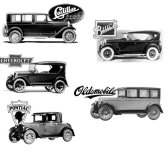
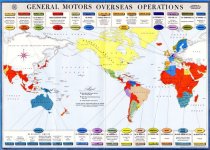
The taproots of General Motors Their taproots reach down to carriage- and wagon-building, to firearms, stationary and marine gasoline engines, milling machinery, roller bearings, bicycle gears, lathes, and even door-bells. Their branch roots stretch back to the beginnings of scientific experiment, since the self-propelled vehicle is the child of physics and chemistry.
David Dunbar Buick, a skilled machinist, inventor and business owner in Detroit, Michigan, began producing gasoline engines around 1895. He completed two experimental automobiles before moving to Flint. Michigan and incorporating the Buick Motor Company in 1903.
Raised in Flint, Michigan, William C. "Billy" Durant was a marketing genius and known as the “king of carriage makers” for building America’s most successful horse-drawn vehicle empire beginning in 1886. Originally skeptical of automobiles, he became smitten with the Buick after the company’s investors approached him to take charge of it. He took the reins in late 1904 and by 1908 had turned it into the largest automobile producer in America.
Already engaged in the machining and manufacturing business, Henry Leland founded the Cadillac Automobile Company in honor of the city of Detroit’s founder, French explorer Antoine de la Mothe Cadillac in 1902. His focus on precision manufacturing led to Cadillac's reputation as Standard of the World.
Engineer and industrialist Charles Stewart Mott's Weston-Mott Axle Co., which already produced axles for Buick, moved to Flint at the invitation of Billy Durant in 1907, the start of relationship that culminated in Mott's leadership on GM's board of directors for 60 years.
1908 GM is Founded and Establishes a Home in Detroit
Billy Durant incorporated General Motors in 1908 "to manufacture, purchase, sell, hire, let, use, repair, maintain, care for and deal in cars, carriages, wagons, boats, flying-machines and vehicles of every sort or description for the transportation of passengers or goods, whether the same be propelled by motors engines, machines or other contrivances operated by means of steam, electricity, gasoline, kerosene, alcohol, or other forms of power now known, or which may hereafter be discovered." Its initial holdings included only the Buick Motor Company but would grow to include many more in the ensuing years.
1908 – 1909 Assembling the General One Company at a Time
General Motors growth began almost immediately after the company's founding. Oldsmobile followed Buick into the fold in November 1908 becoming one of 25 different companies acquired during GM's first few years. Among the notable brands added were Cadillac, Oakland (the predecessor of Pontiac), the future AC Spark Plug and three brands that would form the basis of GMC: Rapid, Reliance and Randolph.
With an unprecedented number of acquisitions in a period of just two years, GM was financially over-extended and burdened with excess production capacity when the U.S. economy and vehicle market slumped unexpectedly in 1910. Although the economy and the industry quickly recovered, GM’s bankers forced founder Billy Durant’s exit and assumed management control of the company in exchange for providing new loans to keep it afloat.
1911 General Motors Export Company - The Beginning of a Global Enterprise
In 1911, General Motors Export Company was established in New York to centralize and coordinate all North American exports under a single staff, the first consolidation of staffs and functions since the company’s founding. With initial staff of just three people and capital of $10,000, worldwide vehicle exports increased from 1,200 units in 1912 to 3,000 the following year. This was a modest start for General Motors as a global enterprise.
GM established its first assembly plant outside North America in Copenhagen in 1923. Later that decade, it added new brands such as Vauxhall, Opel and Holden to strengthen its position and manufacturing base in the global market. By the time GM marked its silver anniversary in 1933, it had operations in more than 17 countries on six continents and would continue to grow throughout the 20th Century.
1916 Durant Returns
After losing control of GM in 1910, Durant began immediately assembling a team of industry associates to form "a new GM:" the Republic Motor Company. Its centerpiece was the Chevrolet Motor Company, which Durant founded with famed Buick auto racer Louis Chevrolet on November 11, 1911. They first came to the market with a powerful six-cylinder luxury car but quickly changed directions to build more economical transportation, a decision that caused Louis to leave his namesake company. This new strategy proved wise. Durant used Chevrolet's success to intensify his personal campaign to regain control of GM. By 1916, he was able to boldly declare to the GM Board of Directors that his Chevrolet Motor Company held a majority stake in GM thus giving him control of the company.
1916-1920 A Second Expansion
With the return of Durant, GM's brand portfolio began to grow once again, adding 14 more companies between 1917 and 1920. These included Chevrolet; United Motors Corporation, GM's service arm that would one day be known as ACDelco; automotive body manufacturer Fisher Body; and Frigidaire, which would go on to manufacture consumer and commercial appliances including refrigerators, ranges, washers and dryers as well as bring air conditioning to both households and automobiles worldwide. Additionally, General Motors Acceptance Corporation (GMAC) was established to finance the sale of GM cars and trucks. Prior to this, consumers had to either pay cash or secure their own loans from banks, most of which were reluctant to issue loans for automobiles. With GMAC’s success and popularity, other companies soon created their own in-house financing operations.
1920 General Motors Research Corporation is Born
When GM acquired Dayton Engineering Laboratories Co. in 1916, it also gained the services of its founder Charles F. Kettering, scientist and inventor of the electric self-starter. Kettering later founded General Motors Research Corporation in Moraine City, Ohio in 1920.
GM Research would become the primary birthplace of technological innovation at General Motors, performing basic research in all areas that might later prove useful. Some of the major innovations it developed during its earliest years included anti-knock compounds for gasoline, fast-drying lacquer paint, automotive safety glass, hydraulic valve lifters and chrome plating.
Innovation at GM Research was not confined solely to the automotive industry over the years. It also made important advances in commercial and household refrigeration; developed a mechanical heart pump that made the world’s first open-heart surgery possible; conceived of the Centri-Filmer for sterilizing blood and vaccines which found wide application in the manufacturing of vaccines, such as the Salk polio vaccine; and partnered with North American Aviation to develop the world’s first operating system for automatically controlling workflow, the forerunner of all computer operating systems used today.
..



